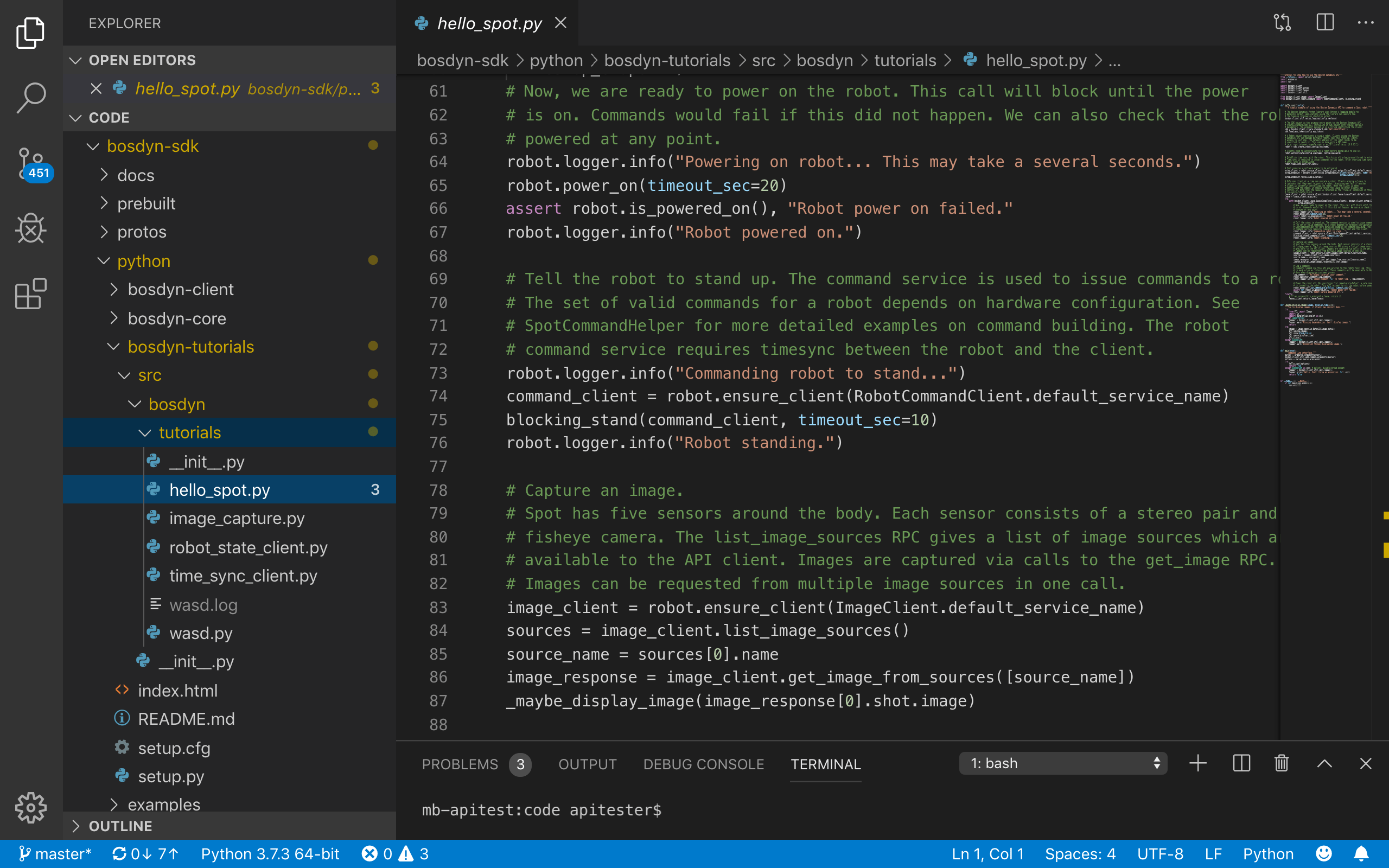If you are a roboticist, chances are you have always wanted to tinker with any of Boston Dynamics’ robots. The Softbank-owned company trying to make those dreams come true by making its Spot SDK publicly available on GitHub. This will allow developers to build custom applications that enable Spot to do useful tasks across a variety of industries.
But there is a catch. Developers who want to actually test their code will need to become part of the Spot Early Adopters Program and lease the quadruped. Prior to the open-source code on GitHub, only developers in the program had access to the SDK. Boston Dynamics shared the following examples of what can be done with the Spot SDK:
- Creating VR-based controls for Spot
- Automating registration of laser-scanning
- Connecting Spot’s data to cloud work order services
- Using edge computing to help Spot semantically understand its environment
“Spot’s early adopters have had robots in hand and on-site for a few months now, and we’re seeing an early adopter community come together to build solutions on the platform,” said Boston Dynamics VP of Business Development Michael Perry. “There’s no better way to facilitate getting customers the tools they need to create exciting new applications for the robot than connecting the already vibrant and creative community already leveraging Spot.”
Boston Dynamics started leasing Spot in September 2019, marketing the quadruped as a tool for construction, oil & gas, public safety and entertainment applications. SpotWalk is a good example of how Spot can be used as a platform. The SpotWalk app, built by HoloBuilder, enables the Spot robot to autonomously walk job sites and capture 360° images to record the progress of a construction project over time. This process allows for quality and accuracy control, giving contractors, trade partners, and owners a digital record.

Sample code from the Spot SDK. | Credit: Boston Dynamics
To foster its development community, Boston Dynamics also announced its first user conference, Actuate. The invite-only event will take place May 12-13, 2020 in Boston, bringing together Spot sensor providers, software developers, and users for presentations, hands-on workshops, and networking.
Marc Raibert steps down as Boston Dynamics CEO
Boston Dynamics has been more focused on real-world applications ever since it was acquired by SoftBank in mid-2017 from Google. In another sign of its commercialization efforts, Boston Dynamics Founder Marc Raibert has stepped down as CEO, a transition TechCrunch reports happened in October 2019. Raibert spun off the company from the MIT in 1992. Raibert is now Chairman and Founder of the company. He reportedly will continue to help it develop research robots. Robert Playter, who has been with Boston Dynamics since 1994, is now CEO.
“I just had my 70th birthday,” Raibert told TechCrunch. “So I’ve been thinking about this for about a year that we needed a succession plan and I had been working on it during that time, talking to SoftBank, making sure they were cool with the idea, and making sure I was cool with the idea.”
Playter told TechCrunch, “I’ve been the organizational guy for a long time. I basically hired most of the people in the company and growing us aggressively is a big challenge right now. Over the past year, bringing on new people into our executive leadership team has been a primary goal, as well as feeding an insatiable appetite for our technical teams to grow in order to meet the goals we’ve set for them. Which includes not only advancing the state of the art of robotics but actually making some of our robots into products and delivering them and supporting them and changing the organization to do so.”
In other signs of commercialization efforts, Boston Dynamics released a video of its reimagined Handle robot in March 2019. Handle is now described as a “mobile manipulation robot designed for logistics. Handle autonomously performs mixed SKU pallet building and depalletizing after initialization and localizing against the pallets.” Handle had two arms when it was introduced in 2017, but now it only has one arm to lift and move boxes thanks to a suction gripper.
Also early in 2019, Boston Dynamics acquired Kinema Systems, a Menlo Park, Calif.-based startup that uses vision sensors and deep learning to help robots manipulate boxes. Financial details of the acquisition were not disclosed.
Boston Dynamics was one of The Robot Report‘s companies to watch in 2019. It doesn’t appear that will change this year as 2020 is crucial for Boston Dynamics.